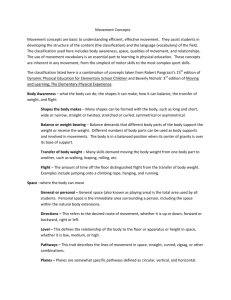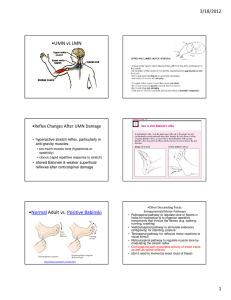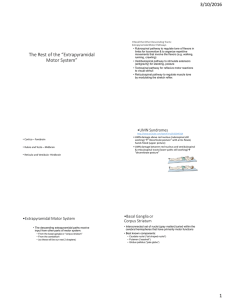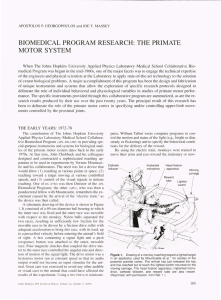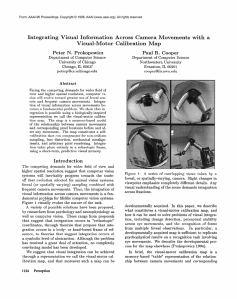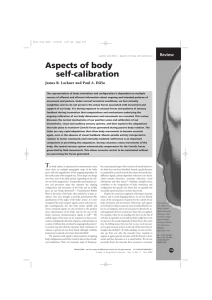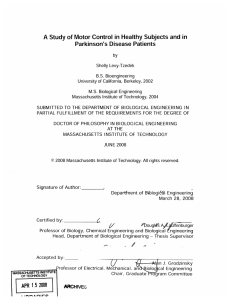Movement: The Keystone of Physical Education and Sport
advertisement
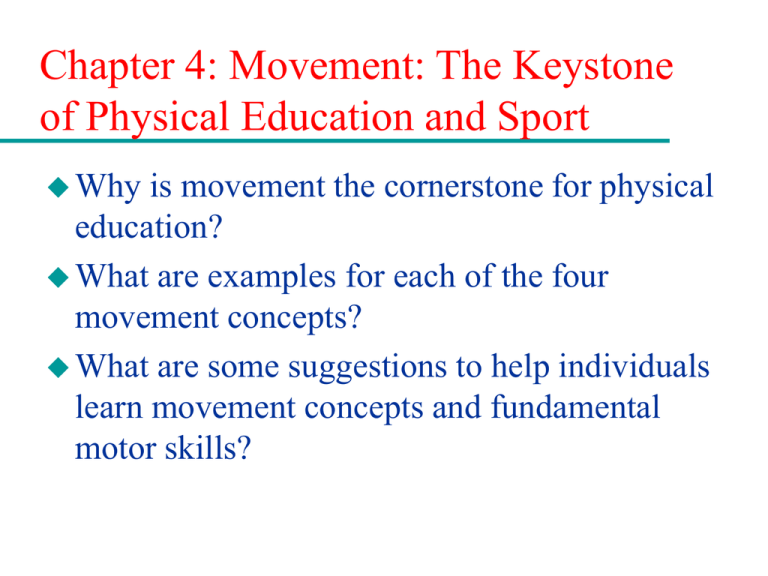
Chapter 4: Movement: The Keystone of Physical Education and Sport Why is movement the cornerstone for physical education? What are examples for each of the four movement concepts? What are some suggestions to help individuals learn movement concepts and fundamental motor skills? Concepts Movement fundamentals Comprised of movement concepts and fundamental motor skills. Movement concepts are knowledge and understanding of movements that allow individuals to adapt and modify their movements to achieve specific movement goals. They include: Body awareness Spatial awareness Qualities of movement Relationships Concepts Fundamental motor skills are the foundation for development of more complex and specialized motor skills used in games, sports, dance, and fitness activities. Ideally, movement concepts and fundamental motor skills should be learned during early childhood and elementary school. More likely to use these skills throughout lifetime when proficiency is achieved at a young age. Two Approaches Movement education Teachers present students with a series of problem-solving movement challenges to help students explore and understand their body. Encourages individual creativity and the ability to adapt and modify movements. Developmentally appropriate approach to physical education Meeting the developmental needs of the learner. Develops competence, self-confidence in ability to move, and encourages regular participation in physical activity. General Factors Affecting Movement Physiological factors Cardiovascular endurance, muscular strength and endurance, and flexibility. Psychological factors Fear, anxiety, self-confidence Sociological factors Membership in a group can influence participation. (ie. Families as good role models who are physically active.) Gender roles Economics Movement Concepts Body Awareness: What can the body do? Space Awareness: Where does the body move? Qualities of Movement: How does the body move? Relationships: With whom and what does the body move? Body Awareness Objectives Identification and location of body parts Body shapes and positions Awareness of body movements Body as a communicator to express feelings Awareness of muscle tension and relaxation Spatial Awareness Objectives To recognize self-space and respect that of others To move within general space safely Recognize different directions and how to change directions To understand different levels of movement To travel through different pathways and the pathways that different objects move in. Adjusting range of movements according to the task and situation Qualities of Movement Objectives Balance: Understand the nature of static and dynamic balance and the role of balance in movement. Time: Differentiate among speeds and to increase or decrease the speed of movement. Force: To be able to create and modify one’s force to meet the demands of the task Flow:To combine movements smoothly and to perform movements within a restricted time or space. Relationships Objectives To understand the relationship of body parts to one another and the body. To move effectively relative to other individuals and/or within a group. To understand the relationship between the body and its parts to objects. Fundamental Motor Skills Three categories: Locomotor Nonlocomotor Manipulative Rate of progress in developing these skills varies with each individual. Several fundamental motor skills can be combined to create a specialized movement necessary in an activity. Lack of development may hinder future participation in activities. Locomotor Movements Walking Leaping Running Skipping Jumping Sliding Hopping Galloping Nonlocomotor Movements Bending and Stretching Twisting and Turning Pushing and Pulling Swinging Manipulative Skills Throwing Catching Kicking Striking Movement Education Rudolf Laban Progressive problem-solving by students Cognitive and creative involvement of students Explore, analyze, and apply knowledge to arrive at solutions; individual differences are appreciated. Teacher’s role as a facilitator. Developmental Approach “Developmentally Appropriate Physical Education Practices for Children” published by Council on Physical Education for Children (COPEC) in 1992. Educational experiences based on the cognitive, psychomotor, and affective needs of children Child-centered; Uniqueness of each child. Progressive sequencing Variety of teaching strategies Assessment Teaching Suggestions Safe learning environment Child-centered instruction Practice opportunities Progression Accountability Learning Across the Lifespan Instruction for adults takes place in a variety of settings. Rehabilitation and the re-teaching of skills. Practice and commitment by children and adults in order to change inefficient skills. Programs should be at appropriate developmental levels and provide a progressive sequence if learning experiences.



